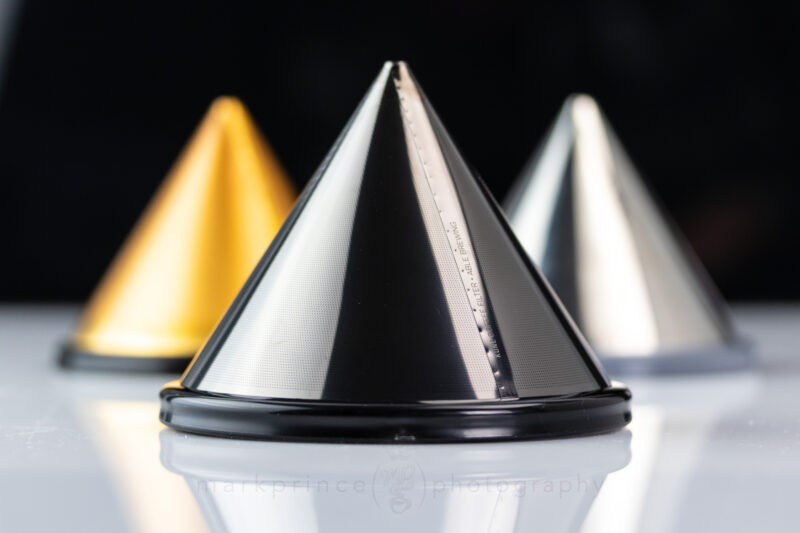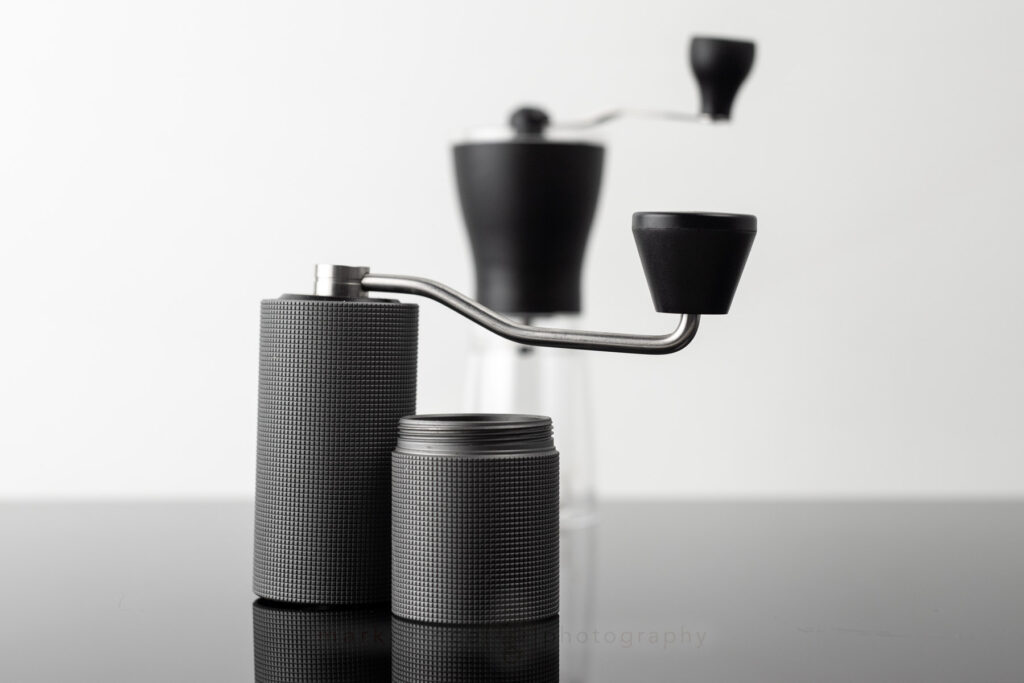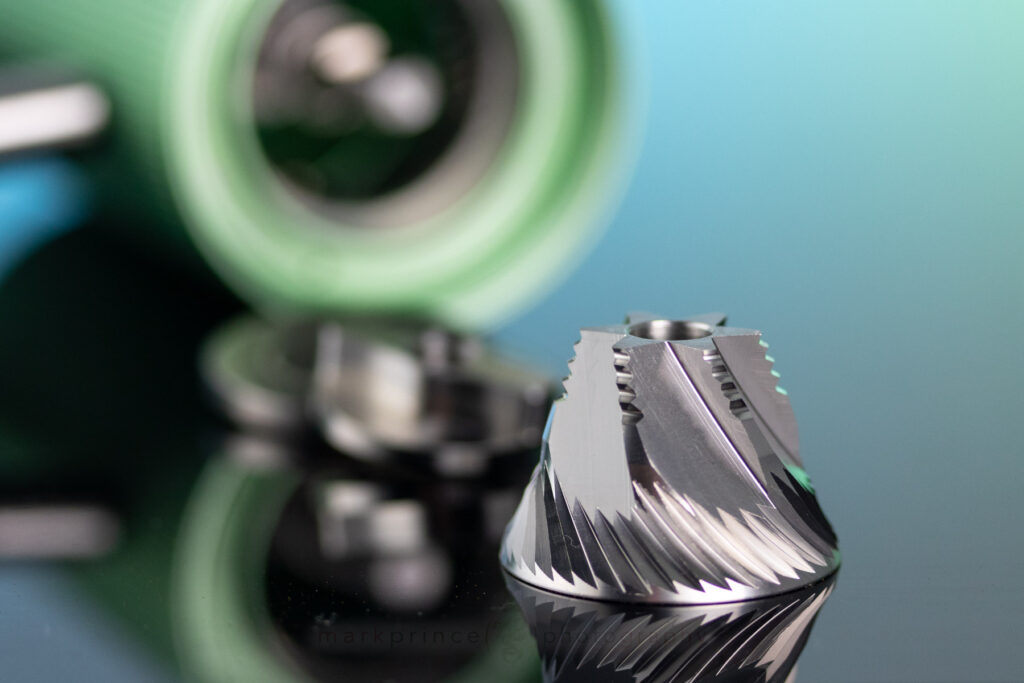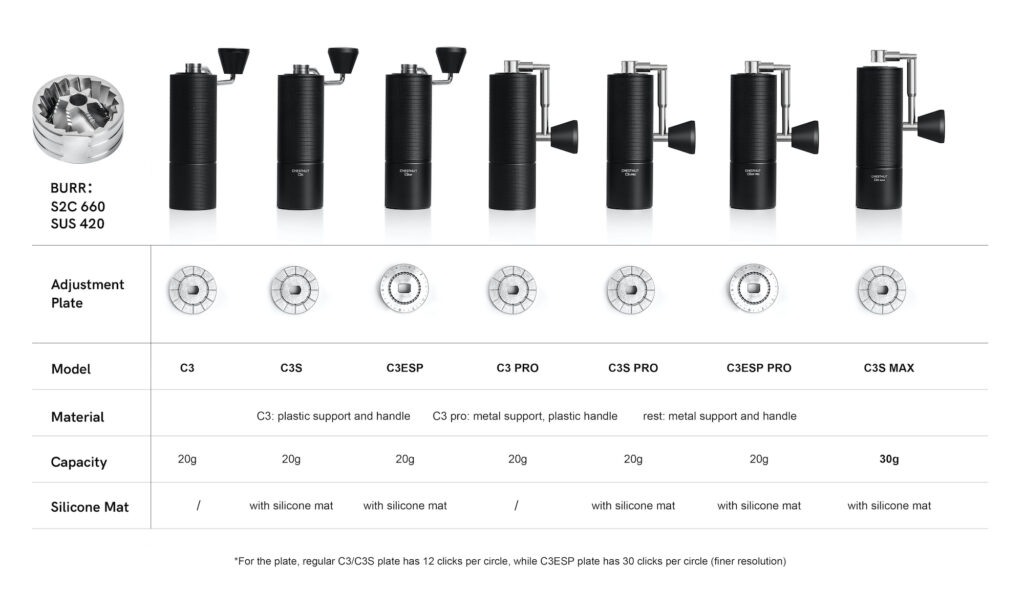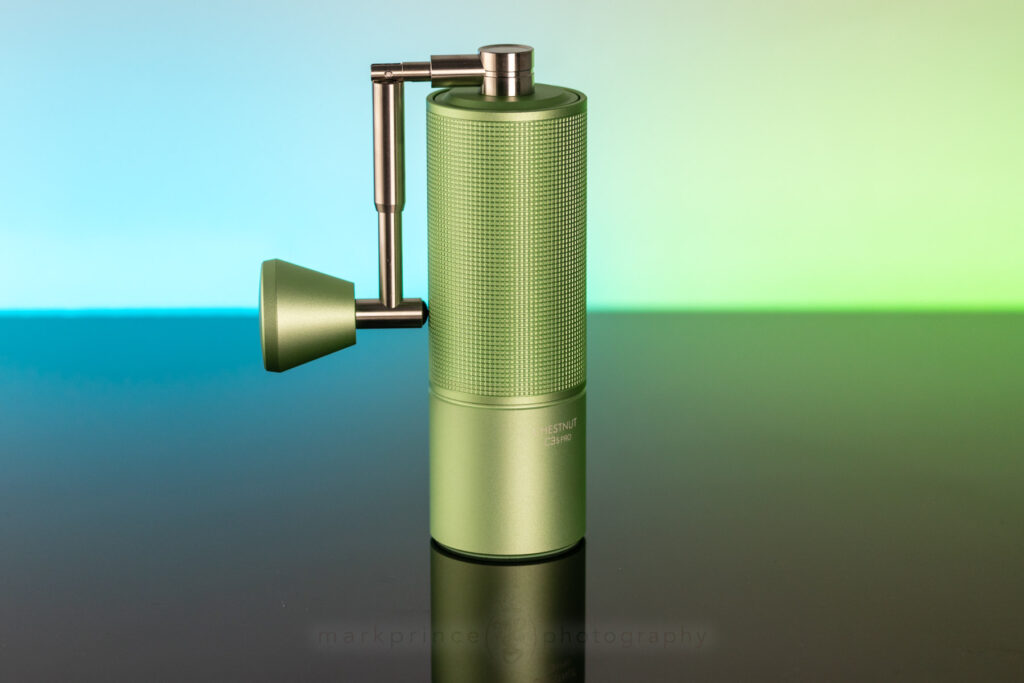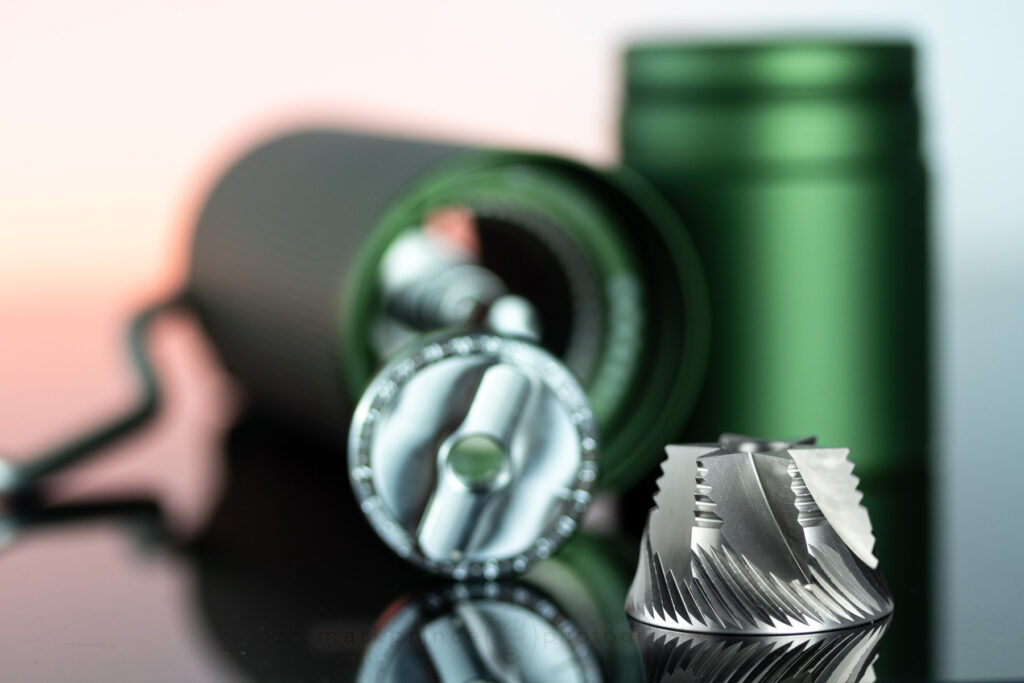Oh my, TIMEMORE. This is a company to keep an eye on.
I’m not sure when the company was founded (answer: 2012); I do know they made a huge entry into specialty coffee in 2017 with the Chestnut G1 grinder, which took two years to develop, and ended up a genuine Reddot winner.
This unique and capable grinder was followed soon by the Nano grinder, which featured a unique (there’s that word again), entirely pleasing to use, folding metal handle.
Then TIMEMORE got really serious. 2018 saw the introduction of their C2 Chestnut series: a grinder that really changed the game as to what a budget, manually cranked coffee grinder could be. Similar in size the Porlex Mini (the grinder that rebooted the manual grinder market, but was never a good performer), or the Hario Mini (the precursor to the Porlex), it’s only real comparisons to the Porlex was a similar price and size.
Everything else about the C2 was better. Better construction. Much better burr stability. More precise grind adjustments. A way better conical burr. And that serious metal body. All for well under $80. Game changer.
Variants of the C2 soon came out. Slim models. Max models. Even more upgraded burr sets. Improved Nano models. But still, TIMEMORE wasn’t done.
Unlike most grinder manufacturers (yup, even Baratza and Comandante), TIMEMORE decided to make their own burrs. Not just make them, but innovate them. They went titanium. They went nitrate coated. They explored various levels of hardened steel. The tooled around with cut patterns. Then they decided to create a new type of burr, one specifically engineered to perform on manual, hand crank grinders.
The S2C burrset was born: Spike to Cut. Designed to first segment and chop coffee beans down to a uniform size, or chunk, then grind those uniform chunks down to an exacting particle size you dial into the grinder’s setting.
In 2020, they introduced their S2C burrset in a new ultra premium hand grinder, one that, if I’m honest, put the industry leading “elite” hand grinder (the Comandante) to a small amount of shame. TIMEMORE introduced the Chestnut X grinder. 42mm S3C burrset. Folding handle design. Squared off body design for better handling. And a first in manual grinders: a dual, micro and macro adjustment dial offering a crazy 120 steps of adjustment. It became, and remains the company’s flagship.
I’ve had several chances to put the Comandante C40 (an earlier variant) up against the TIMEMORE Chestnut X, and it was clear every time which was the better grinder.
They still weren’t done with grinders. Today, the company offers a dizzying array of manual hand grinders (and soon, a very high end electric one) that fit into almost every price point. And the best part is, the cutting edge technology and features of their flagship Chestnut X have moved down the line.
And don’t even get me started on their efforts in the coffee scale space (that’s for another post).
Let’s dive into some of the most recent offerings from TIMEMORE. This is an introduction post, but we do have full reviews in progress on three of these grinders. (ed.note – they’ve been delayed as we overhaul our manual grinder review parameters).
Timemore Grinders for 2023
The current lineup for TIMEMORE grinders is quite substantial. By my count, they have 14 current manual, hand cranked grinders, including 7 just within the C3 series (introduced about 18 months ago). Others include several C2 models (complete bargains at $80 or less), Slim variants, Max variants, Nano, the X, and the G1 is still out there.
The C3 series is TIMEMORE’s widest range, and it can get a bit confusing. Thankfully, their naming system helps define the grinders’ featureset:
- C3: The base model, with plastic frame inside for the spindle.
- C3 S: The new silicone base on the grinder contributes the “S” part. Also have a metal frame inside for the spindle.
- C3 Pro: Features the folding handle design.
- C3 ESP: Includes the 30 click high resolution grind adjustment dial and the silicone base.
Some models incorporate two of the elements above. For instance, the C3ESP Pro has the metal frame, silicone base, 30 click high resolution dial, and the folding crank arm (it also has a metal crank knob – no plastic in that puppy). The C3S Pro has the metal frame, silicone base, folding crank arm and metal crank knob.
Then there’s the C3S Max, which ups the coffee dose volume to 30g, and features the folding handle, the all metal construction and the silicone base. Why no C3S ESP Max? Because who needs 30g of coffee ground for espresso!
Here’s a chart supplied by TIMEMORE that helps with the models in the C3 lineup.
Reviews, Incoming
We have the C3S Pro ($100) and the C3ESP Pro ($110) here to do full reviews on. Early days still, but I can say these are excellent hand grinders. The S2C burrset makes the grinding action near effortless, and it is reasonably fast. The folding crank arms are weirdly addictive to use (fold up, fold down, fold up, fold down!). Everything about these grinders screams quality of build.
One More Thing…
We also have another grinder from TIMEMORE that I haven’t mentioned yet.
The Chestnut X is their flagship and hard to find at times. It’s also redonkulously expensive at $300 (though still cheaper than a Comandante C40 MkIV). It has all the swoonish bells and whistles, including that industry leading 42mm S2C 880 hardened steel burrset.
Though some of the Chestnut X’s features have filtered down to the C3 series (and even the C2 series), one thing that has not is the grind capacity or the 42mm S2C burr. So TIMEMORE made another Chestnut X. They call it the Chestnut X Lite. It is $100 less than the flagship model. And we have one to test.

The Chestnut X Lite has the X’s capacity and same 42 S2C burr set. Same internal construction, mostly. Same action, same particle distribution size for the grinds, same very premium feel to it all.
The Chestnut X Lite does not have the micro-macro adjustment system of the flagship grinder, instead just retaining the macro 24 click burr grind selector. It also does not have the folding crank arm (that’s the thing I miss the most). It also does not have the flagship model’s squared off body: instead it is the normal round model most other TIMEMORE grinders have.
Eschewing those features allowed the company to introduce the Chestnut X Lite at $100 less than the flagship grinder: it retails for just under $200 USD. The biggest cost savings, I’m told, come from the round vs. squared off body shape, followed by the non folding crank arm, then the micro adjustment dial for grind selection.
To be honest, I could do without the squared off body shape, I could even do without the micro adjustment dial (though a variant of the ESP high resolution dial would have been good), but I think the folding crank arm is TIMEMORE’s signature for hand grinders, and if they can put it on the latest iteration of the C2 grinder which retails for $80, they should have put it on the X Lite.
But I’ll get into that a lot more in the full review.
Mark has certified as a Canadian, USA, and World Barista Championship Judge in both sensory and technical fields, as well as working as an instructor in coffee and espresso training. He started CoffeeGeek in 2001.
-
Mark Princehttps://coffeegeek.com/author/markprince/April 30, 2024
-
Mark Princehttps://coffeegeek.com/author/markprince/April 29, 2024
-
Mark Princehttps://coffeegeek.com/author/markprince/April 28, 2024





